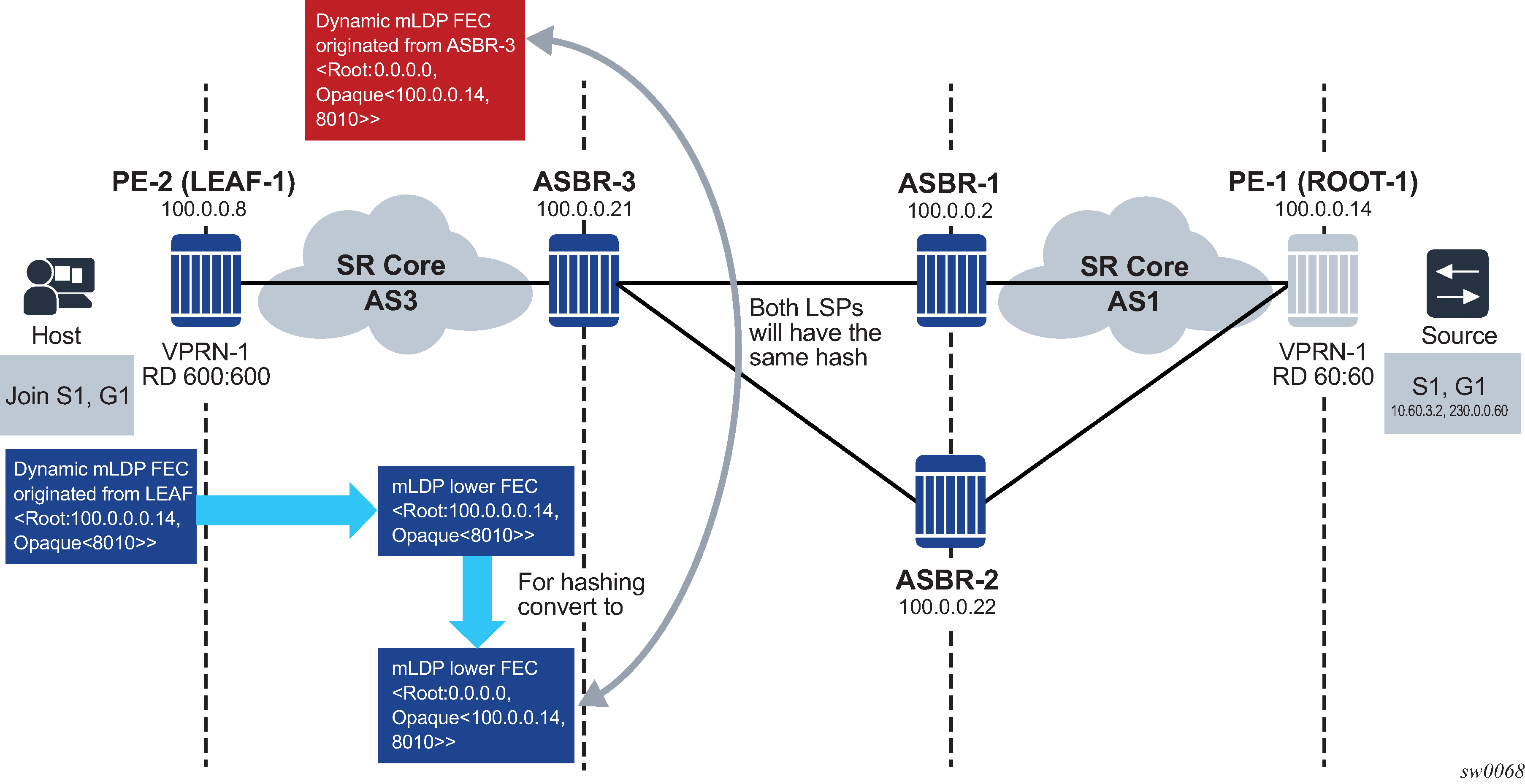Figure: Hashing at the ASBR illustrates hashing at the ASBR.

In Figure: Hashing at the ASBR, the leaf node has ROOT-1 in the RTM for optimized Option C; therefore, the leaf does not generate a recursive type 7 opaque, and only generates a type 1 opaque. When the FEC arrives at ASBR-3, it has a basic type 1 FEC of <ROOT: 10.0.0.14, opaque <8010>>.
If the ASBR also has a host that generates a mLDP LSP toward the root, this FEC looks up <ROOT: 0.0.0.0, opaque <10.0.0.14, 8010>>.
Hashing is performed based on the opaque value of the FEC. See ‟Supported Recursive Opaque Values” in the 7450 ESS, 7750 SR, 7950 XRS, and VSR MPLS Guide for more information.
The opaque of the leaf node is not the same as the opaque of the ASBR bud node. In this scenario, the two LSPs generate a different ASBR as the next-hop, inefficiently duplicating multicast traffic.
To prevent this problem, SR OS converts the lower FEC of opaque type 1 that arrives from the leaf node into a recursive type 7 FEC, so that the bud FEC generated by the ASBR and the FEC arriving from the leaf node results in the same upper ASBR.